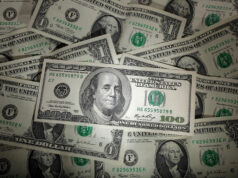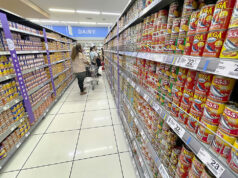THE fuel pricing practices of oil companies seem to be within the bounds of the rules, economists said, casting doubt on the Department of Energy’s investigation into the extent of the industry’s latest fuel price rollback.
The DoE on Oct. 1 asked oil companies to present the basis for their price reductions, which it claims should have been larger.
The rollbacks followed a few days of price volatility after the drone attacks last month on the Saudi crude production facilities. Global prices settled back down after production was not disrupted as much as initially feared.
“I have the impression that this is an accepted way to price,” University of Asia and the Pacific (UA&P) School of Economics associate professor Peter Lee U said in an Oct. 8 telephone interview.
“But, if (the computations are) different, well, technically they are free. They’re only required by law to inform the DoE and they have.”
Some oil companies on Sept. 30 cut prices by P1.45 per liter for gasoline, P0.60 for diesel, and P1.00 for kerosene. The DoE said prices could have been slashed further by P0.07 per liter for gasoline and by P0.16 per liter for diesel and kerosene.
Mr. Lee U said oil firms follow an automatic pricing mechanism as prescribed by a formula that was put in place when the industry was transitioning towards full deregulation, upon enactment of Republic Act No. 8479, or the Downstream Oil Industry Deregulation Act of 1998.
In 2008, the DoE tapped Mr. Lee U and Sycip, Gorres & Velayo (SGV) to conduct an independent study on the reasonableness of oil pricing system.
Rizal Commercial Banking Corp. (RCBC) chief economist Michael L. Ricafort said the difference in the pricing of oil companies and the DoE’s computation could be down to differing prices for when the fuel was purchased.
“There’s a chance that some of these (companies) purchased when prices were much higher, so it does follow na baka nahirapan sila mag-rollback (they might have found it harder to roll back prices),” Mr. Ricafort said in a separate interview on Oct. 9.
“There are some players who may have stocked when the price was much lower.”
He said, however, that the government is right to be concerned about the pace of the rollbacks.
“When prices are rising, ang bilis nila magtaas bakit kapag nag-rollback parang matagal ata (the industry is quick to raise prices when crude prices are high but slow to reduce when prices fall),” he said.
Mr. Ricafort said the industry was quick to increase prices after the Sept. 14 drone attacks.
“A few days after Sept. 14, nagtaas agad. Mataas pa, dalawang piso. Nung nag-rollback ang tagal (The industry raised prices immediately, by a large margin of about P2. When it was time to roll back they took their time),” he said.
The drone attacks cut Saudi Arabia’s oil production by half, or an estimated 5.7 million barrels per day. — Charmaine A. Tadalan



